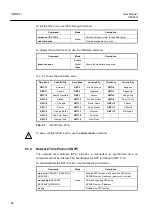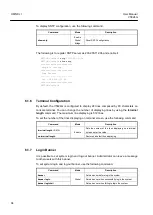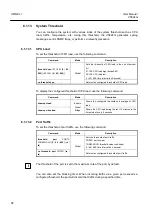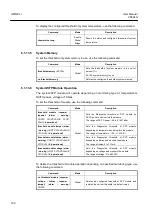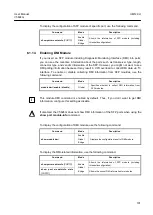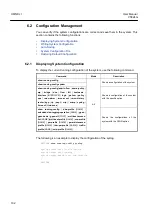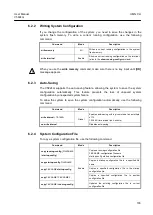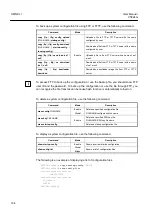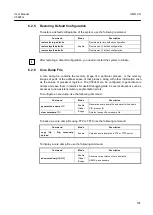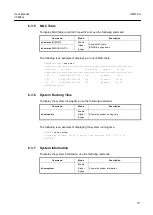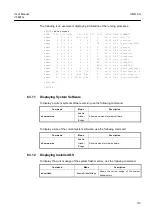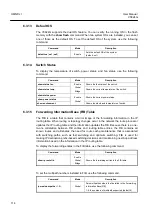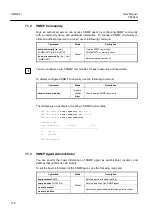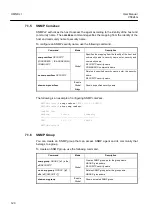
User Manual
UMN:CLI
V5824G
105
6.2.5
Restoring Default Configuration
To restore a default configuration of the system, use the following command.
Command
Mode
Description
restore factory-defaults
Enable
Restores a factory default configuration.
restore layer2-defaults
Restores an L2 default configuration.
restore layer3-defaults
Restores an L3 default configuration.
After restoring a default configuration, you need to restart the system to initiate.
6.2.6
Core Dump File
A core dump file contains the memory image of a particular process, or the memory
images of parts of the address space of that process, along with other information such
as the values of processor registers. The V5824G can be configured to generate core
dumps and save them in ramdisk for useful debugging aids in several situations such as
accesses to non-existent memory, segmentation errors.
To configure a core dump, use the following command.
Command
Mode
Description
generate
coredump
PID
Enable
Global
Bridge
Generates a core dump file and save it with a name.
PID: process ID
clear coredump
PID
Deletes the specific core dump file.
To back up a core dump file using FTP or TFTP, use the following command.
Command
Mode
Description
copy
{
ftp
|
tftp
}
coredump
upload
Enable
Uploads a core dump file to FTP or TFTP server.
To display a core dump file, use the following command.
Command
Mode
Description
show coredump
[
NAME
]
Enable
Global
Bridge
Shows a current status of core dump file
NAME: process name
i


